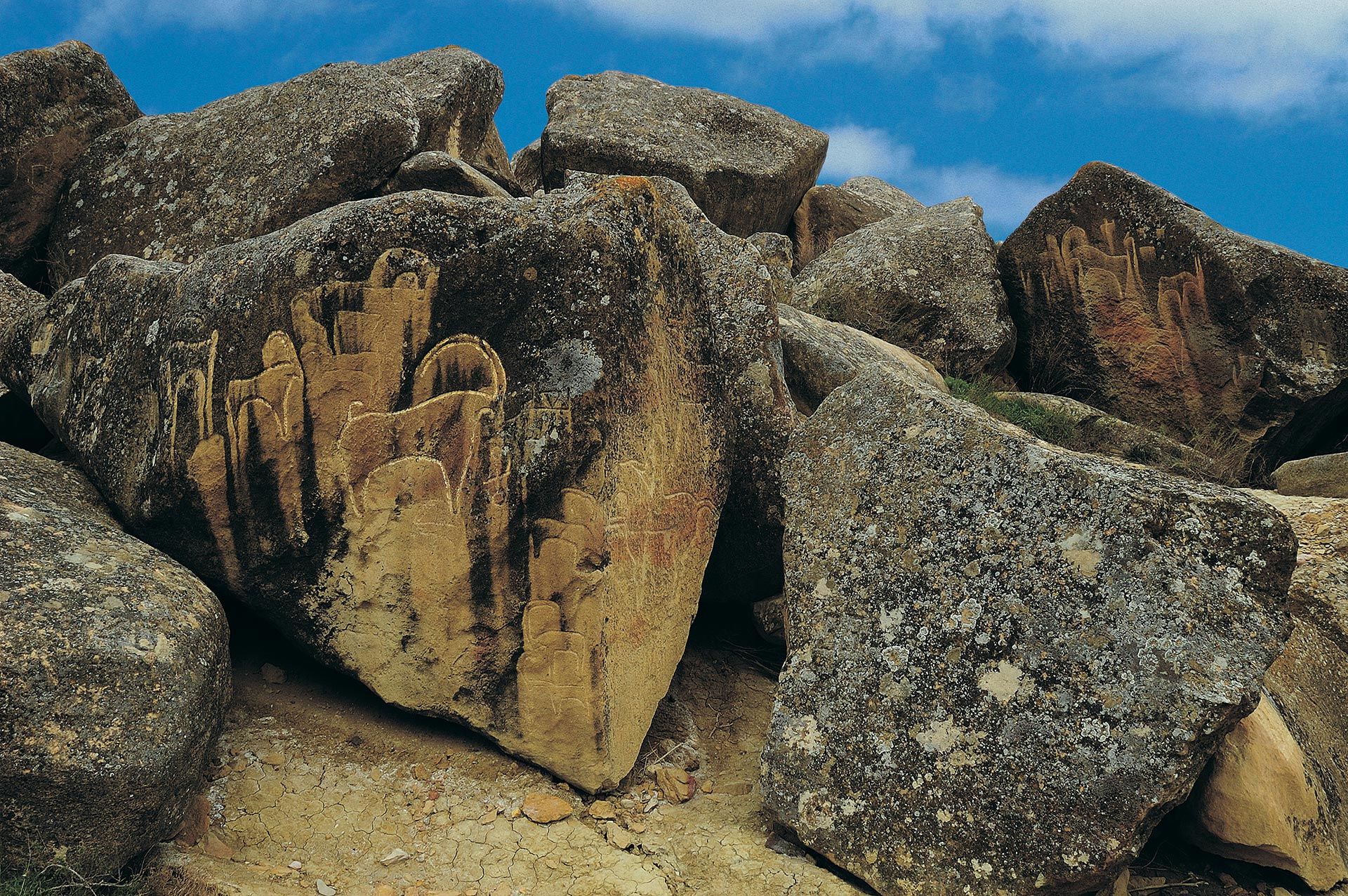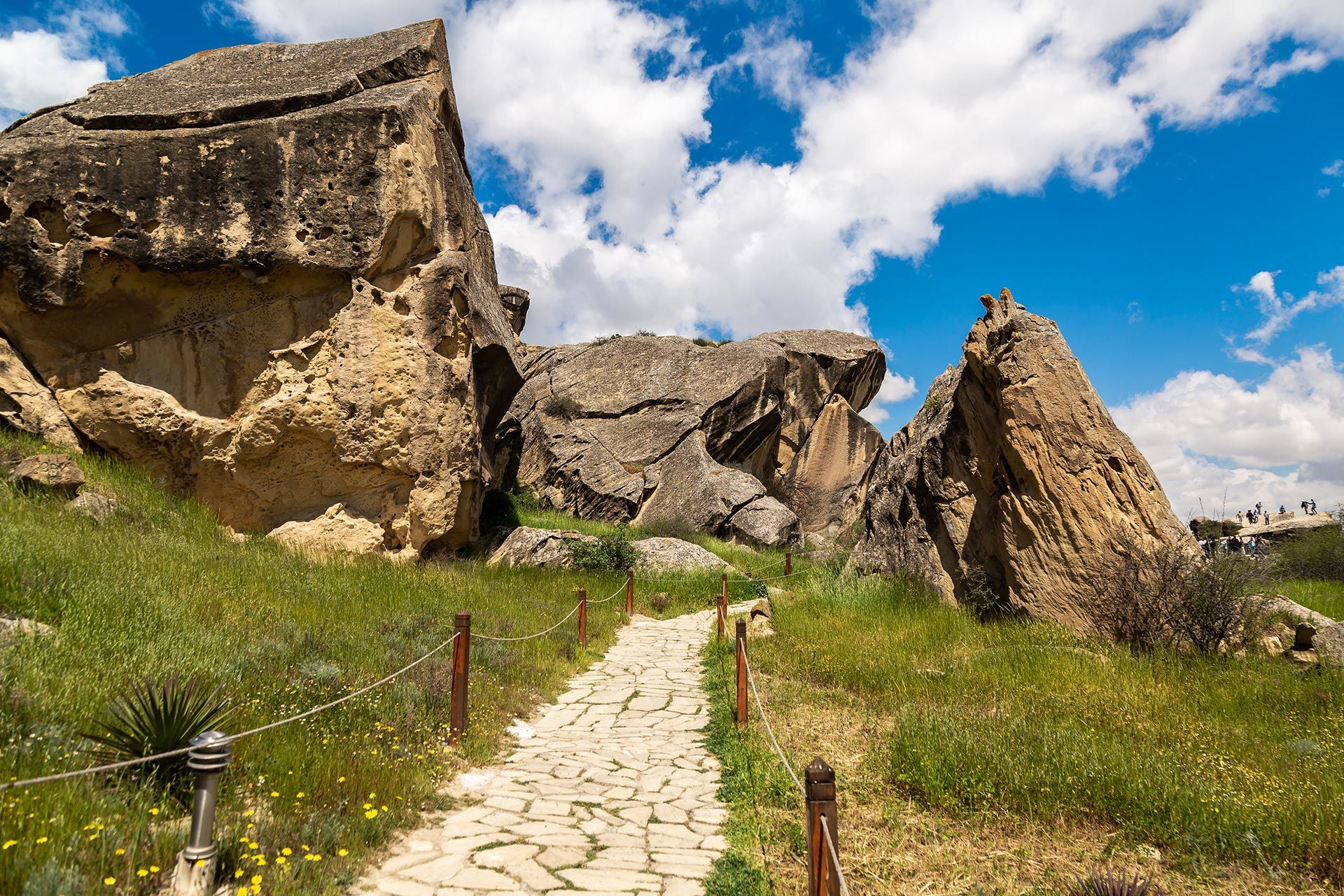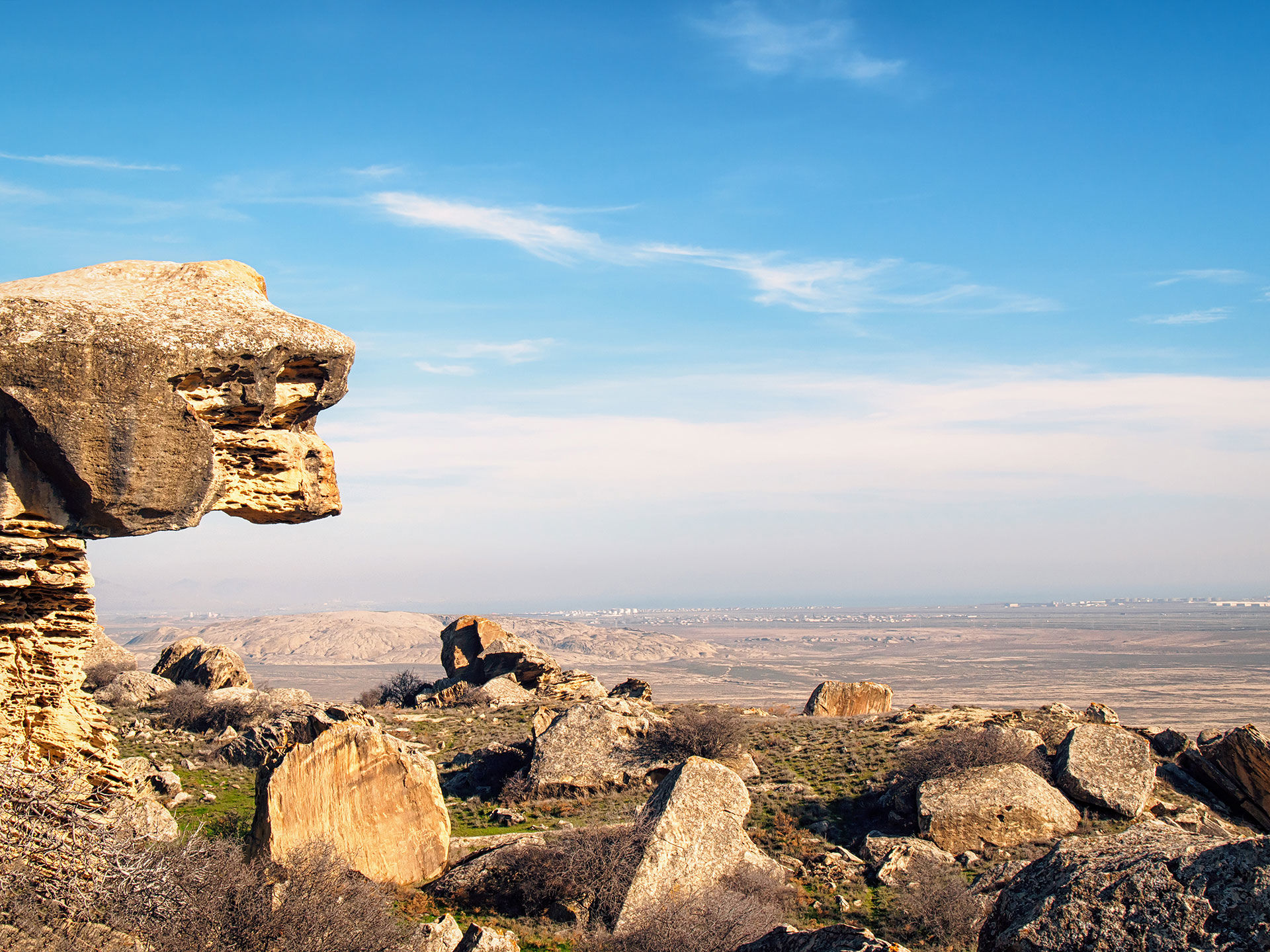Description
From prehistoric rock art to musical stones, the Azerbaijani people’s prehistoric past comes dramatically to life in the Gobustan State Reserve, home to an astonishing collection of over 6,000 ancient petroglyphs. Depicting scenes of people, warriors, animals, boats, dances, hunting, camel caravans and more, they chart ways of life dating back between 5,000 and 20,000 years.
Established in 1966 and covering 537 ha, the Gobustan State Reserve is located amid the Boyukdash, Kichikdash and Jingirdagh mountains, about 60 kilometres south of Baku. Besides all the breathtaking rock art, visitors can also explore the remains of caves, settlements and burial grounds used by humans between the Upper Paleolithic and the Middle Ages.
Two more of the reserve's highlights include an inscription left on a rock by a passing Roman soldier in the 1st century AD, the easternmost Roman inscription ever found, and a 2m-long musical stone called a 'gaval dash,' which makes a unique tambourine-like sound when struck with a smaller stone. What’s more, just a short drive away you can discover the mystery of Azerbaijan’s many mud volcanoes, one of the world’s most intriguing natural wonders
Azerbaijan Has Nearly 400 Mud Volcanoes
Azerbaijan has the greatest concentration of mud volcanoes in the world: nearly 400 in total, and most are located near Baku. They make for an easy day trip if you’re on limited time. If you look at an Azerbaijan map the area known as Gobustan is the best place to go.
Mud volcanoes don’t cover a lot of ground (they’re usually no more than 10 kilometers in diameter), but seeing their broiling, bubbling, messy appearance makes for one of the most interesting experiences in the country.



